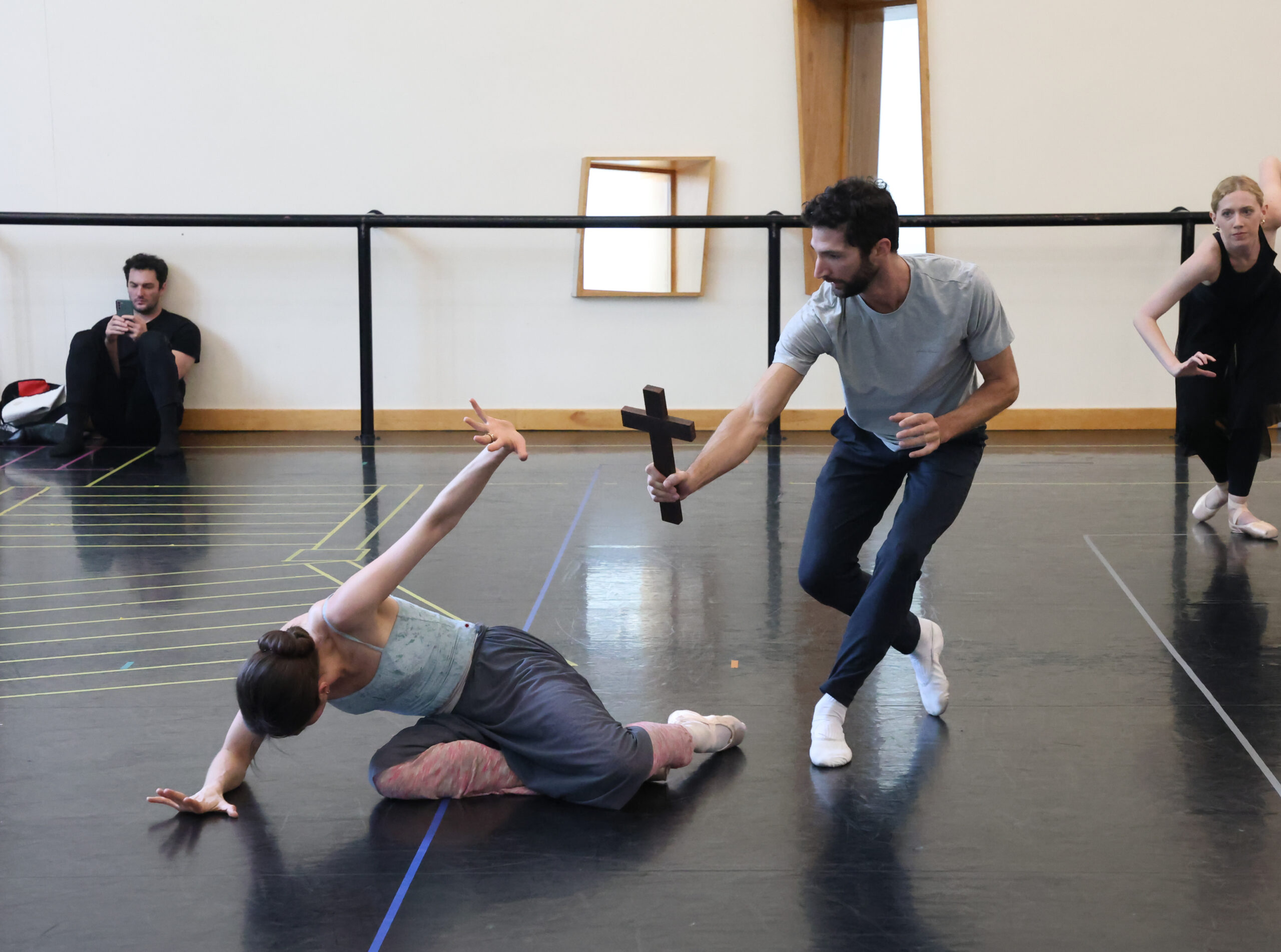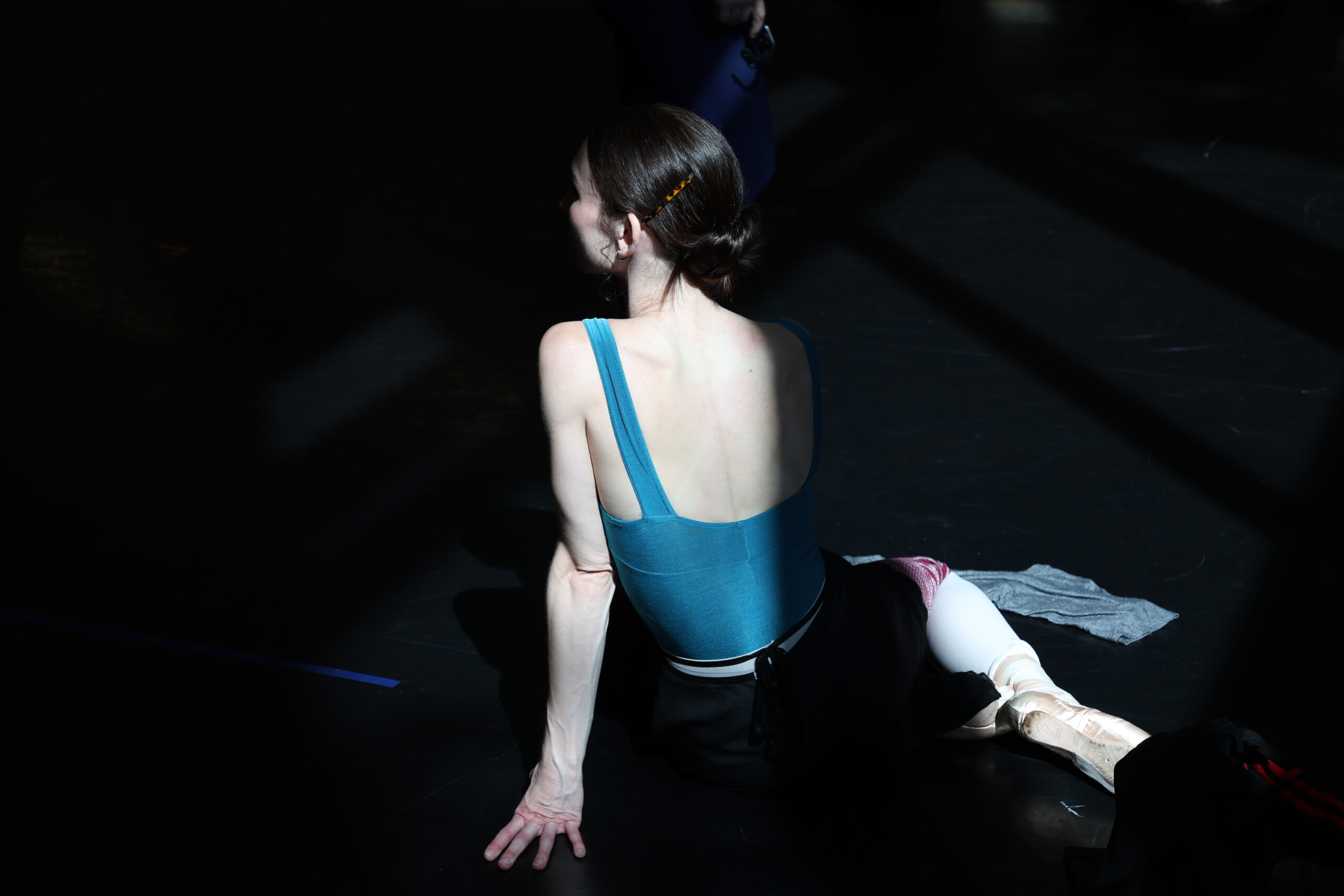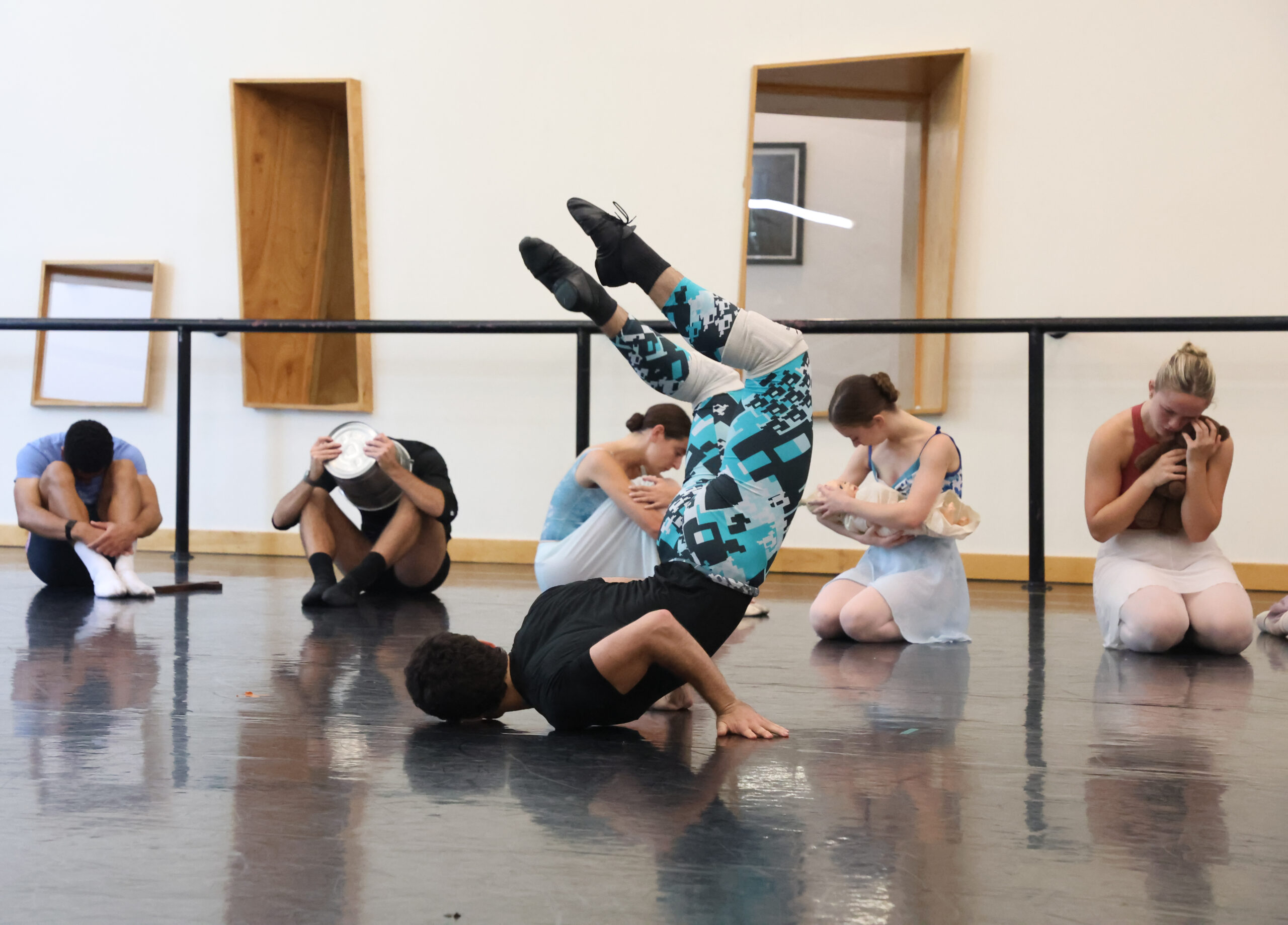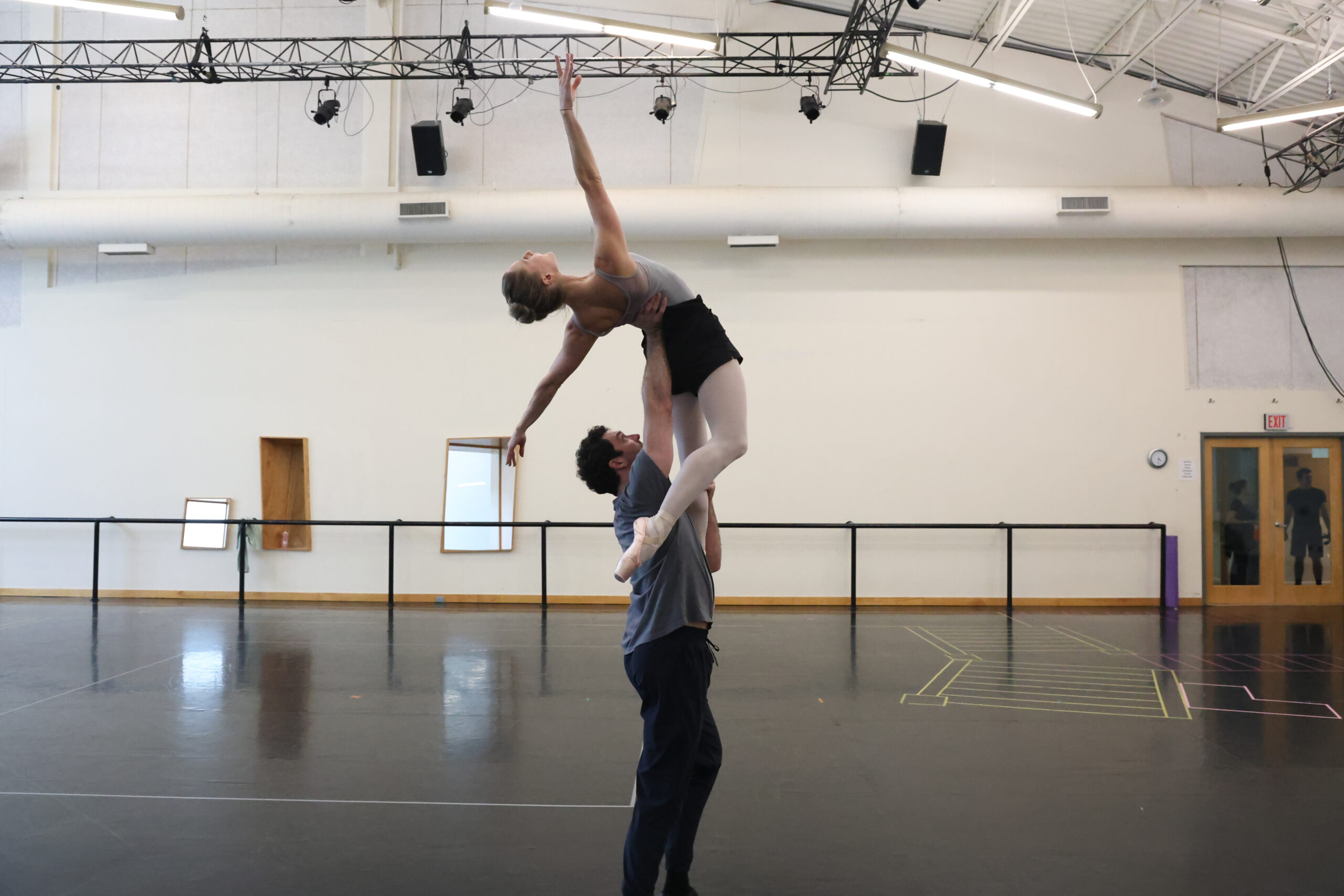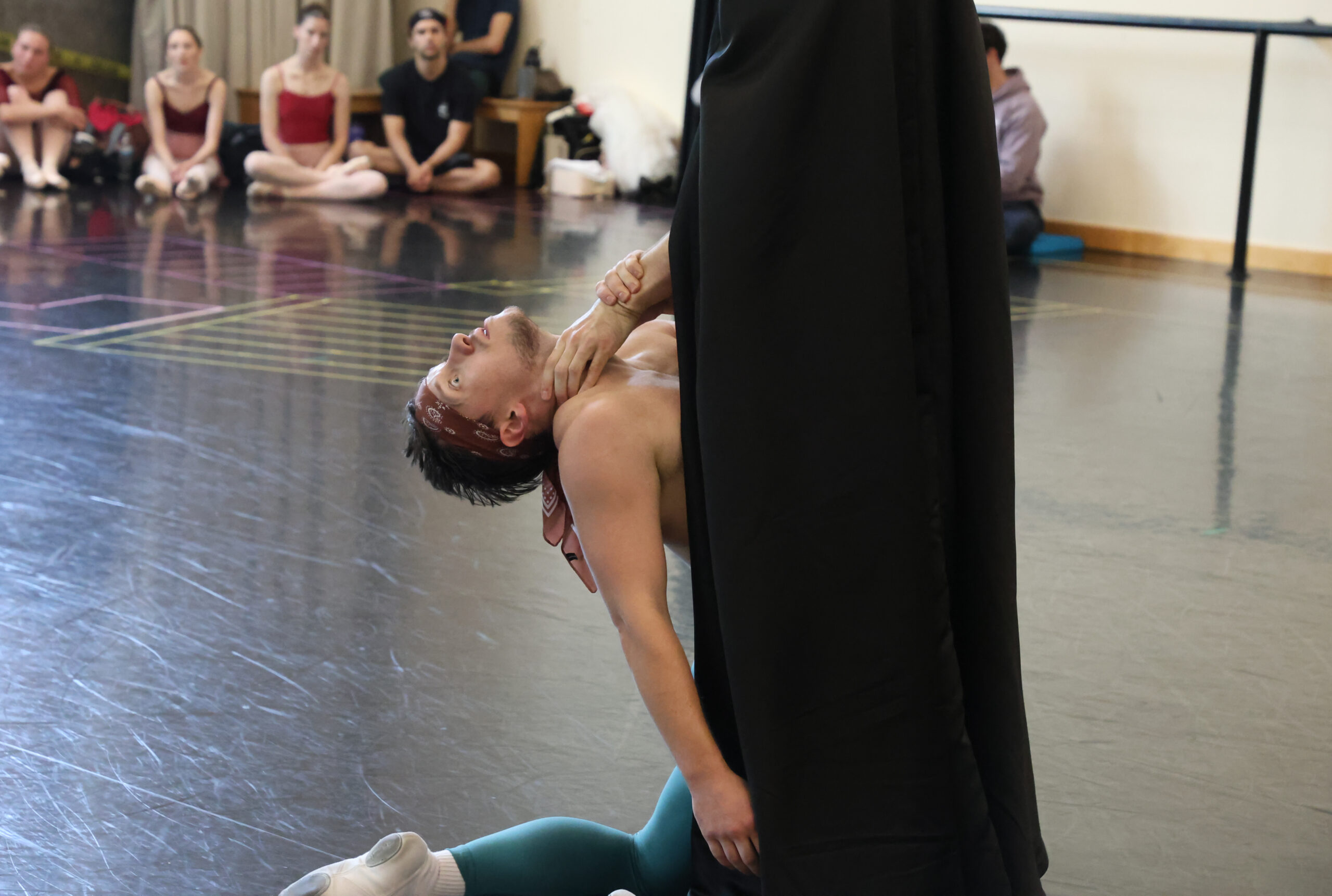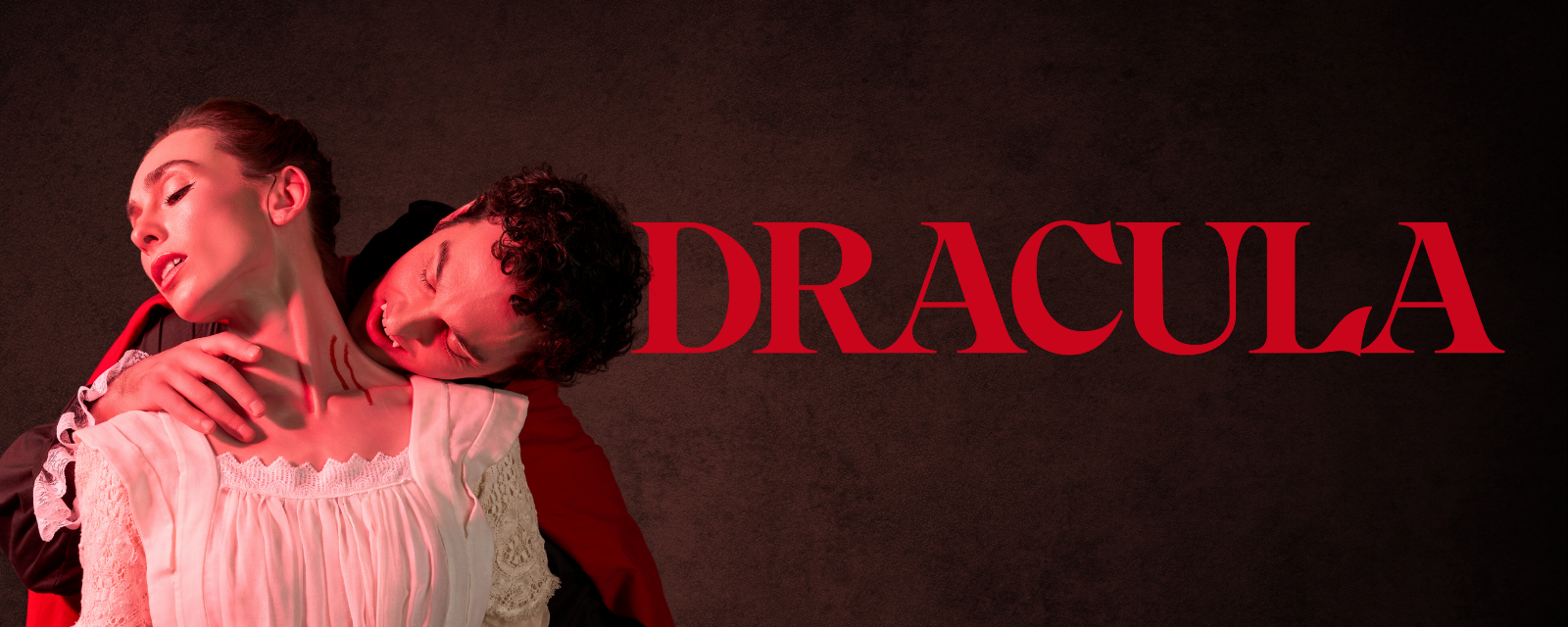
DRACULA
OCTOBER 10-11, 2025 | The Brown Theatre
Choreography by Alun Jones
About
After nearly 30 years in the shadows, Louisville Ballet’s Dracula will be revamped for the historic Brown Theatre with new scenic designs. Sink your teeth into this deliciously dark adaptation of Bram Stoker’s gothic masterpiece and encounter chilling accounts of Count Dracula from three of his victims: the madman Renfield, the haunted heroine Mina, and Mina’s doting husband, Jonathan Harker. This twisted tale of obsession is good to the last drop, but be warned — it’s not for the faint of heart.
Location
The Brown Theatre
Run Time
Approximately 1 hour and 50 minutes, including a 20-minute intermission
Performance Schedule
Friday, Oct. 10 at 7:30 p.m.
Saturday, Oct. 11 at 1:30 p.m.
Saturday, Oct. 11 at 7:30 p.m.
SYNOPSIS
ACT I — RENFIELD’S STORY
Dr. Seward’s Asylum, London, 1897
Renfield, a solicitor, has returned from Transylvania in a state of insanity and is committed into the asylum. He remembers his experiences at Dracula’s castle when he first met the Count and the vampire women. Another solicitor, Jonathan Harker, bids farewell to his fiancee, Mina, and leaves for Transylvania to negotiate a contract with Count Dracula, who wishes to purchase property in London.
Photo by Andrew Kung
ACT II — JONATHAN’S STORY
Scene I — Near the Borgo Pass, Transylvania
The women of the village try to persuade Jonathan from continuing on his journey. Failing to convince Jonathan to turn back, they give him a crucifix to protect him from evil.
Scene II — Dracula’s Castle in the Carpathian Mountains, Transylvania
Jonathan is greeted by Dracula and made welcome to his home.
Scene III — Lucy Westenra’s House, London
Mina decides to stay with her friend Lucy Westenra during Jonathan’s absence. During Mina’s stay, Lucy gives a party to welcome her new neighbor, Count Dracula. Among the guests are Professor Van Helsing, a German scientist, and one of Lucy’s suitors, Lord Godalming.
Scene IV — Dracula’s Castle, Transylvania
Ignoring Dracula’s warning not to wander into the unused parts of the castle, Jonathan finds himself in a decaying bedroom where he encounters the vampire women.
Scene V — Lucy’s House, London
Meanwhile, back at Lucy’s party, the guests are amused by a troupe of entertainers. Both Mina and Lucy find themselves attracted to Count Dracula.
Photo by Andrew Kung
ACT III — MINA’S STORY
Scene I — Dr. Seward’s Asylum, London
Renfield’s condition has seriously deteriorated and, accusing him of betrayal, Dracula kills him.
Scene II — The Garden of Lucy’s House
Lucy has become weaker since her party, alarming her friends and suitors. Professor Van Helsing begins to suspect the real reasons behind her illness. Before any precautions can be made, Lucy is drawn by the call of Dracula into the garden where her fate as his newest victim is sealed.
Scene III — Dr. Seward’s Asylum (some time later), London
Lucy has died. Mysterious attacks on children begin occurring throughout the city. As a vampire, Lucy rises from her grave and abducts a child from the asylum.
Scene IV — London
Knowing what must be done to end the attacks, Professor Van Helsing, Quincy Morris (another of Lucy’s former suitors), and Lord Godalming wait for Lucy at her tomb to break Dracula’s curse.
Scene V — Lucy’s Garden, London
Mina, despite Jonathan’s return from Transylvania, has fallen in love with Dracula and is torn between her love for Jonathan and the Count.
Scene VI — London
Dracula, now in love with Mina and not wishing his curse on her, leaves for Transylvania. Van Helsing, Dr. Seward and Jonathan, accompanied by Mina, pursue Dracula in order to destroy him.
Scene VII — Dracula’s Castle, Transylvania
Arriving at the castle first, Professor Van Helsing and Mina are protected from the vampire women by a mystical circle of fire while awaiting the arrival of Jonathan and Dr. Seward. Descending into the vault, Van Helsing kills the vampire women. Dracula, pursued by Jonathan and Dr. Seward, is trapped in his own castle and is destroyed.
Photo by Andrew Kung
Artistic Team
Alun Jones (1937-2019) led Louisville Ballet as Artistic Director from 1978-2002. Born and educated in Wales, he danced with the Welsh National Opera, London’s Festival Ballet, and Zurich Opera Ballet and was a founding member of the New London Ballet. He and Helen Starr joined Louisville Ballet in 1975 to help establish The Louisville Ballet School. He catapulted the Company into local and global success, presenting seventy-eight world premieres and sixty-five Louisville premieres, increasing subscriptions exponentially, and arranging for the renowned Mikhail Baryshnikov to perform with the Company twice. He remained a prominent regional and global figure in the arts, serving on the jury for the European Stage Dance Union contest in Croatia and as a member of the International Dance Council in Greece. In 1998, he received the Milner Award, Kentucky’s highest award in the Arts, and in 2002 received the Louisville Forum’s Fleur-de-Lis Award.
Helen Starr was born in England and trained at the Royal Academy of Dance and the Royal Ballet School. She spent 7 years with the Royal Ballet as Soloist and Assistant Ballet Mistress. She then joined London Festival Ballet (now English National Ballet) as a Principal Dancer and danced leading roles in all the classics and contemporary repertoire. Her partners have included John Gilpin, André Prokovsky, Peter Schaufuss, Peter Martins, Frank Augustyn and Mikhail Baryshnikov, with whom she danced La Sonnambula, Petrouchka, and the pas de deux from Le Corsaire in Louisville. During her 38 years with Louisville Ballet, Miss Starr staged Swan Lake, The Sleeping Beauty, Giselle, Coppélia, Les Sylphides, La Fete Etrange, Paquita & Sir Frederick Ashton’s Les Patineurs. Recognized nationwide as a fine ballet teacher and coach, she continues to stage ballets and give Master classes. Miss Starr regularly teaches Encore Classes for the Louisville Ballet Youth Ensemble and serves as a guest instructor at the Louisville Ballet Summer Intensive.
Senior Rehearsal Director
Co-Artistic Director of the Studio Company
Born in Lexington, Kentucky, Mikelle Bruzina is a graduate of The Royal Winnipeg Ballet. In her fifteen years as a Louisville Ballet Company Artist, she performed soloist and principal roles and was recognized for her diversity in classical, modern, and contemporary ballets. As a dancer, stager, and rehearsal assistant, she has worked with choreographers such as Val Caniparoli, Mark Godden, Adam Hougland, Ronald Hynd, Lucas Jervies, Alun Jones, Ben Needham-Wood, Helen Pickett, Andre Prokovsky, Brandon Ragland, Domy Reiter-Soffer, Andrea Schermoly, Ching Ching Wong, and many others. Mikelle has choreographed works for Louisville Ballet including Gloria, Harmony of Contrasts, Life Rhythms, continuum, Sansei, and Tinjy Wits. She has also created ballets for Memphis Ballet, Boca Ballet Theatre, Lexington Ballet, Milwaukee Ballet, and The Louisville Ballet School.
Mikelle began teaching in Japan in 1991 under the guidance of Emi Okajima. Having worked under the direction of Alun Jones, Bruce Simpson and Robert Curran, she carries a vast experience in teaching, staging and coaching in classical, modern and contemporary styles of dance.
Mikelle was Ballet Mistress for thirteen seasons, Artistic Director for two seasons, and is also Co-Artistic Director of the Louisville Ballet Studio Company. This marks her 30th year with Louisville Ballet.
Principal Repetiteur + Senior Rehearsal Director
Originally from Baton Rouge, Helen Daigle began her training at Decatur School of Ballet in Decatur, Georgia. Upon her family’s return to Louisiana, she continued her training at Dancer’s Workshop under the tutelage of Molly Buchmann and Sharon Mathews. She has also studied at Joffrey Ballet School and School of American Ballet. She started performing with Baton Rouge Ballet Theatre junior and senior companies and began her professional career with Feld Ballets/New York. She has also danced with Ballet Hispanico and Miami City Ballet.
Helen joined Louisville Ballet in 1998 and enjoyed 20 wonderfully fulfilling seasons. She performed featured roles in a range of works including Lark Ascending, In the Glow of the Night, Who Cares?, Serenade, Lamberena, Scheherazade, Company B, Etesian and Cold Virtues. She has performed principal roles in full length ballets such as The Magic Flute, Don Quixote, Giselle, Nutcracker, Swan Lake, The Sleeping Beauty, La Sylphide and A Cinderella Story.
She has originated roles in ballets choreographed by Val Caniparoli, Amy Siewert, Helen Pickett and Adam Hougland. Helen has had the pleasure of staging Hougland’s Rite of Spring, Cold Virtues, and Fragile Stasis on companies such as Louisville Ballet, Cincinnati Ballet, Tulsa Ballet, Kansas City Ballet and Smuin Ballet. She was thrilled to work as Adam Hougland’s rehearsal assistant as he created Ten Beautiful Objects for Louisville Ballet in 2013 and for his re-imagined Petrouchka in 2016.
Helen took on the role of Cast Manager for the Children’s Cast of Val Caniparoli’s The Brown-Forman Nutcracker and has been a member of the Louisville Ballet School Faculty since 2005, teaching students from age eight to adult. She has taught at summer intensives in Shreveport, Monroe, and Baton Rouge, Louisiana; Baltimore, Maryland; and Louisville, Kentucky. Helen was honored to be a part of the faculty for the RDA Southwest Dance Festival 2016.
She is happy to call Louisville home, where she lives with her husband Brad and their two children, Keiran and Iris, and is thrilled to continue working for Louisville Ballet as Principal Repetiteur + Senior Rehearsal Director.
Eric is a Louisville native and has been a freelance Scenic Designer for over 25 years. He has a Bachelor of Fine Arts degree in Theatre from Western Kentucky University, a Master of Fine Arts degree in Scenic Design from Boston University, and a Master of Arts in Teaching degree from Spalding University. Eric was the Scenic Design faculty member at The Youth Performing Arts School for 13 years. Some theatres Eric has worked for include: San Francisco Opera, Opera East Texas, Williamstown Theatre Festival, Summer Play Festival in NYC, Kentucky Opera, Wolftrap Opera, Boston Playwright’s Theatre, Music Theatre of Louisville, Kentucky Shakespeare Festival, Pandora Productions and The Liminal Playhouse. Eric has also worked as an Assistant Scenic Designer at Actor’s Theatre of Louisville and for several broadway designers in New York City.
George Crumb (1929-2022) was a Pulitzer Prize-winning American composer of avant-garde contemporary classical music. Known for their intense, surrealist, and haunting qualities, his compositions often used experimental techniques and unconventional notation. Black Angels was released in 1971 in protest against the Vietnam War, and Music for a Summer Evening was released in 1974, the third volume of his Makrokosmos. In addition to the Pulitzer Prize, he won a Grammy Award and the Edward MacDowell Medal.
Béla Bartók (1881-1945) was a Hungarian composer and pianist, one of the most influential of the 20th century. He was one of the founders of comparative musicology (now known as ethnomusicology), the interdisciplinary study of music in its social and cultural contexts. He collected, notated, and studied folk music extensively, which informed his compositions — he was greatly influenced by the Carpathian basin and European art music. Music for Strings, Percussion, and Celesta premiered in Switzerland in 1937, and its excerpts have appeared in many television shows and films, such as Stanley Kubrick’s The Shining.
Jesse is a Freelance Lighting Designer, proudly based here in Louisville. Recent designs with Louisville Ballet include Sleeping Beauty, Vibes, Swan Lake, Rite of Spring, and more. He also regularly designs with Kentucky Shakespeare, Kentucky Opera, Louisville Orchestra, The Va Va Vixens, Circus Flora, and Pandora Productions. Other past collaborators include The Big Apple Circus, The Tennessee Williams Festival St. Louis, The Mary Shelley Electric Co., and others across the country. Working primarily in dance, circus, and theatre, Jesse specializes in the moments and productions that happen in between those disciplines.
Gallery
Photos by Kateryna Sellers
FAQ
What access services do you offer for the performances?
American Sign Language (ASL) interpretation will be available for the pre-show talks and curtain speeches for all performances. Audio description is available upon request two weeks prior to the performance. Wheelchair seating is available at The Kentucky Center, The Brown Theatre, and Louisville Ballet Studios. Contact [email protected] for more information on accommodations
How do I find my tickets?
If you chose Will Call as your ticket delivery method, you will be able to pick up your tickets at the theater an hour before the performance begins. If you chose digital tickets, you will be able to access them a few hours before the performance begins. Click here to learn more about digital tickets.
Where should I park?
Due to enhanced security procedures, we highly encourage allowing yourself extra time to get into the theatre and be comfortably seated. For performances at The Brown Theatre, the Brown garage is next to the hotel/theatre. There is also metered street parking. Click here to learn more about The Brown Theatre
I’ve never been to the ballet. What should I expect?
We’re so glad you’ve chosen to attend a live art experience with us! For more details about what to wear, theater etiquette, and what to expect, visit our frequently asked questions.


